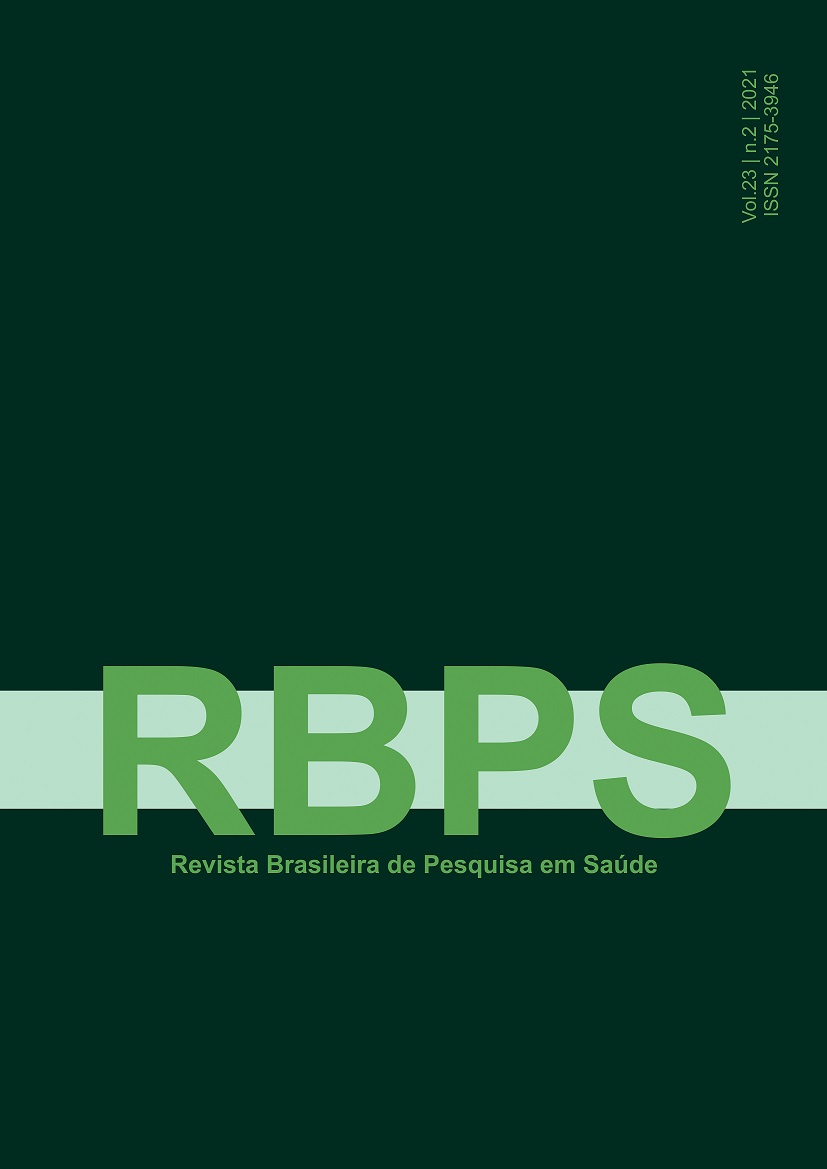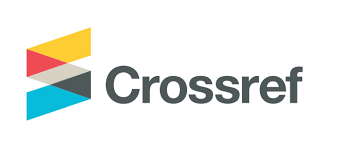Fatores etiológicos da hipomineralização molar-incisivo (HMI): revisão integrativa da literatura
DOI:
https://doi.org/10.47456/rbps.v23i2.35158Palabras clave:
Hipomineralização molar incisivo, Desmineralização dentária, Molar, Incisivo, EtiologiaResumen
Introdução: A Hipomineralização Molar-Incisivo (HMI) é caracterizada como uma alteração qualitativa do esmalte de origem sistêmica que envolve de 1 até 4 primeiros molares permanentes, podendo, também, atingir incisivos permanentes. Objetivos: Avaliar as evidências disponíveis na literatura sobre os fatores etiológicos associados à HMI. Métodos: Realizou-se uma revisão integrativa da literatura a partir de pesquisas nas bases de dados Pubmed, Web of Science, Scopus, Lilacs e Scielo, entre os meses março e maio de 2020. Utilizaram-se os descritores “Dental enamel hypoplasia”, “Tooth Demineralization”, “Molar”, “Incisor” e “Etiology”. Os critérios de inclusão foram: artigos publicados em português, inglês ou espanhol indexados nas bases de dados selecionadas e disponíveis de maneira gratuita, acessados via Portal de Periódicos Capes. Foram descartados todos os estudos que não apresentassem relação com a temática de interesse e que não fossem estudos primários. Resultados: Inicialmente, obteve-se um quantitativo de 673 publicações. Após avaliação criteriosa, a amostra final constou de 19 artigos. Influência genética e condições ambientais tais como renda familiar, problemas durante o parto e de saúde durante os três primeiros anos de vida da criança são fatores associados à HMI. Conclusão: Problemas durante o parto, hipocalcemia no recém-nascido prematuro, uso de antibióticos, fatores ambientais, febre alta e doenças respiratórias na primeira infância, além de fatores genéticos, estão associados ao surgimento da HMI.
Descargas
Referencias
Weerheijm KL, Jälevik B, Alaluusua S. Molar-incisor hypomineralisation. Caries research. 2001;35(5):390-1.
Neville BW DD, White DK. Oral and Maxillofacial Pathology. 3ª edição ed2009.
Farah RA, Monk BC, Swain MV, Drummond BK. Protein content of molar-incisor hypomineralisation enamel. Journal of dentistry. 2010;38(7):591-6.
Fagrell TG, Dietz W, Jälevik B, Norén JG. Chemical, mechanical and morphological properties of hypomineralized enamel of permanent first molars. Acta odontologica Scandinavica. 2010;68(4):215-22.
Lygidakis NA, Wong F, Jälevik B, Vierrou AM, Alaluusua S, Espelid I. Best Clinical Practice Guidance for clinicians dealing with children presenting with Molar-Incisor- Hypomineralisation (MIH): An EAPD Policy Document. European archives of paediatric dentistry : official journal of the European Academy of Paediatric Dentistry. 2010;11(2):75-81.
Fernandes AS, Mesquita P, Vinhas L. Hipomineralização incisivo-molar: uma revisão da literatura. Revista Portuguesa de Estomatologia, Medicina Dentária e Cirurgia Maxilofacial. 2012;53(4):258-62.
Heitmuller D, Thiering E, Hoffmann UTE, Heinrich J, Manton D, KÜHnisch JAN, et al. Is there a positive relationship between molar incisor hypomineralisations and the presence of dental caries? International journal of paediatric dentistry. 2013;23(2):116-24.
Raposo F, de Carvalho Rodrigues AC, Lia É N, Leal SC. Prevalence of Hypersensitivity in Teeth Affected by Molar-Incisor Hypomineralization (MIH). Caries research. 2019;53(4):424-30.
Ebel M, Bekes K, Klode C, Hirsch C. The severity and degree of hypomineralisation in teeth and its influence on oral hygiene and caries prevalence in children. International journal of paediatric dentistry. 2018;28(6):648-57.
Oyedele TA, Folayan MO, Adekoya-Sofowora CA, Oziegbe EO. Co-morbidities associated with molar-incisor hypomineralisation in 8 to 16 year old pupils in Ile-Ife, Nigeria. BMC oral health. 2015;15:37.
Dulla JA, Meyer-Lueckel H. Molar-incisor hypomineralisation: narrative review on etiology, epidemiology, diagnostics and treatment decision. Swiss dental journal. 2021;131(11).
Americano GC, Jacobsen PE, Soviero VM, Haubek D. A systematic review on the association between molar incisor hypomineralization and dental caries. International journal of paediatric dentistry. 2017;27(1):11-21.
Jeremias F, Pierri RA, Souza JF, Fragelli CM, Restrepo M, Finoti LS, et al. Family-Based Genetic Association for Molar-Incisor Hypomineralization. Caries research. 2016;50(3):310-8.
Laisi S, Kiviranta H, Lukinmaa PL, Vartiainen T, Alaluusua S. Molar-incisor-hypomineralisation and dioxins: new findings. European archives of paediatric dentistry : official journal of the European Academy of Paediatric Dentistry. 2008;9(4):224-7.
Pang L, Li X, Wang K, Tao Y, Cui T, Xu Q, et al. Interactions with the aquaporin 5 gene increase the susceptibility to molar-incisor hypomineralization. Archives of oral biology. 2020;111:104637.
Bussaneli DG, Restrepo M, Fragelli CMB, Santos- Pinto L, Jeremias F, Cordeiro RCL, et al. Genes Regulating Immune Response and Amelogenesis Interact in Increasing the Susceptibility to Molar-Incisor Hypomineralization. Caries research. 2019;53(2):217-27.
Jeremias F, Koruyucu M, Küchler EC, Bayram M, Tuna EB, Deeley K, et al. Genes expressed in dental enamel development are associated with molar-incisor hypomineralization. Archives of oral biology. 2013;58(10):1434-42.
Kühnisch J, Mach D, Thiering E, Brockow I, Hoffmann U, Neumann C, et al. Respiratory diseases are associated with molar-incisor hypomineralizations. Swiss dental journal. 2014;124(3):286-93.
Kılınç G, Çetin M, Köse B, Ellidokuz H. Prevalence, aetiology, and treatment of molar incisor hypomineralization in children living in Izmir City (Turkey). International journal of paediatric dentistry. 2019;29(6):775-82.
Ahmadi R, Ramazani N, Nourinasab R. Molar incisor hypomineralization: a study of prevalence and etiology in a group of Iranian children. Iranian journal of pediatrics. 2012;22(2):245-51.
Souza JF, Costa-Silva CM, Jeremias F, Santos-Pinto L, Zuanon AC, Cordeiro RC. Molar incisor hypomineralisation: possible aetiological factors in children from urban and rural areas. European archives of paediatric dentistry : official journal of the European Academy of Paediatric Dentistry. 2012;13(4):164-70.
Muratbegovic A, Markovic N, Ganibegovic Selimovic M. Molar incisor hypomineralisation in Bosnia and Herzegovina: aetiology and clinical consequences in medium caries activity population. European archives of paediatric dentistry : official journal of the European Academy of Paediatric Dentistry. 2007;8(4):189-94.
Elfrink MEC, Moll HA, Kiefte-de Jong JC, Jaddoe VWV, Hofman A, ten Cate JM, et al. Pre- and postnatal determinants of deciduous molar hypomineralisation in 6-year-old children. The generation R study. PLoS One. 2014;9(7):e91057-e.
Dantas-Neta NB, Soares Figueiredo M, Lima CCB, Bendo CB, Matos de Andrade É M, Lima MDM, et al. Factors associated with molar-incisor hypomineralisation in schoolchildren aged 8-10 years: a case-control study. International journal of paediatric dentistry. 2018;28(6):570-7.
Teixeira R, Andrade NS, Queiroz LCC, Mendes FM, Moura MS, Moura L, et al. Exploring the association between genetic and environmental factors and molar incisor hypomineralization: evidence from a twin study. International journal of paediatric dentistry. 2018;28(2):198-206.
Portella PD FF, Soares RC, Nagata AG, Tomaz C de O, Assunção LRS. . Molar-Incisor Hypomineralization and Associated Factors: A Case-Control Study. Pesquisa Brasileira Em Odontopediatria e Clínica Integrada. 2018;18:1-10.
Lygidakis NA, Dimou G, Marinou D. Molar-incisor-hypomineralisation (MIH). A retrospective clinical study in Greek children. II. Possible medical aetiological factors. European archives of paediatric dentistry : official journal of the European Academy of Paediatric Dentistry. 2008;9(4):207-17.
Whatling R, Fearne JM. Molar incisor hypomineralization: a study of aetiological factors in a group of UK children. International journal of paediatric dentistry. 2008;18(3):155-62.
Pitiphat W, Luangchaichaweng S, Pungchanchaikul P, Angwaravong O, Chansamak N. Factors associated with molar incisor hypomineralization in Thai children. European journal of oral sciences. 2014;122(4):265-70.
Ghanim A, Manton D, Bailey D, Mariño R, Morgan M. Risk factors in the occurrence of molar-incisor hypomineralization amongst a group of Iraqi children. International journal of paediatric dentistry. 2013;23(3):197- 206.
Garot E, Manton D, Rouas P. Peripartum events and molar-incisor hypomineralisation (MIH) amongst young patients in southwest France. European archives of paediatric dentistry : official journal of the European Academy of Paediatric Dentistry. 2016;17(4):245-50.
Butera A, Maiorani C, Morandini A, Simonini M, Morittu S, Barbieri S, et al. Assessment of Genetical, Pre, Peri and Post Natal Risk Factors of Deciduous Molar Hypomineralization (DMH), Hypomineralized Second Primary Molar (HSPM) and Molar Incisor Hypomineralization (MIH): A Narrative Review. Children (Basel, Switzerland). 2021;8(6).
Koruyucu M, Özel S, Tuna EB. Prevalence and etiology of molar-incisor hypomineralization (MIH) in the city of Istanbul. Journal of dental sciences. 2018;13(4):318-28.
MAV. R. Estudos Caso-Controle: uma breve revisão. Gazeta Médica da Bahia. 2010;144.
Stephen BH SR, Warren SB, Deborah GG, Thomas BN. Delineando a Pesquisa Clínica. 4ª edição ed2015.
Taylor GD. Molar incisor hypomineralisation. Evidence-based dentistry. 2017;18(1):15-6.
Fatturi AL, Wambier LM, Chibinski AC, Assunção L, Brancher JA, Reis A, et al. A systematic review and meta-analysis of systemic exposure associated with molar incisor hypomineralization. Community dentistry and oral epidemiology. 2019;47(5):407-15.
Rai A, Singh A, Menon I, Singh J, Rai V, Aswal GS. Molar Incisor Hypomineralization: Prevalence and Risk Factors Among 7-9 Years Old School Children in Muradnagar, Ghaziabad. Open Dent J. 2018;12:714-22.
van Amerongen WE, Kreulen CM. Cheese molars: a pilot study of the etiology of hypocalcifications in first permanent molars. ASDC journal of dentistry for children. 1995;62(4):266-9.
Sönmez H, Yıldırım G, Bezgin T. Putative factors associated with molar incisor hypomineralisation: an epidemiological study. European archives of paediatric dentistry : official journal of the European Academy of Paediatric Dentistry. 2013;14(6):375-80.
Reid DJ, Dean MC. Variation in modern human enamel formation times. Journal of human evolution. 2006;50(3):329-46.
Suckling GW. Developmental defects of enamel- -historical and present-day perspectives of their pathogenesis. Advances in dental research. 1989;3(2):87-94.
Giuca MR, Cappè M, Carli E, Lardani L, Pasini M. Investigation of Clinical Characteristics and Etiological Factors in Children with Molar Incisor Hypomineralization. International journal of dentistry. 2018;2018:7584736.
Sundfeld D, da Silva L, Kluppel OJ, Santin GC, de Oliveira R, Pacheco RR, et al. Molar Incisor Hypomineralization: Etiology, Clinical Aspects, and a Restorative Treatment Case Report. Operative dentistry. 2020;45(4):343-51.
Wuollet E, Laisi S, Salmela E, Ess A, Alaluusua S. Molar-incisor hypomineralization and the association with childhood illnesses and antibiotics in a group of Finnish children. Acta odontologica Scandinavica. 2016;74(5):416-22.
Willmott NS, Bryan RA, Duggal MS. Molar-incisor-hypomineralisation: a literature review. European archives of paediatric dentistry : official journal of the European Academy of Paediatric Dentistry. 2008;9(4):172-9.
Kusku OO, Caglar E, N. S. The prevalence and aetiology of molar-incisor hypomineralisation in a group of children in Istanbul. European journal of paediatric dentistry. 2008;9(3):139-44.
Laisi S, Ess A, Sahlberg C, Arvio P, Lukinmaa PL, Alaluusua S. Amoxicillin may cause molar incisor hypomineralization. Journal of dental research. 2009;88(2):132-6.
Sui W, Boyd C, Wright JT. Altered pH regulation during enamel development in the cystic fibrosis mouse incisor. Journal of dental research. 2003;82(5):388-92.
Vieira AR, Manton DJ. On the Variable Clinical Presentation of Molar-Incisor Hypomineralization. Caries research. 2019;53(4):482-8.
Vieira AR, Kup E. On the Etiology of Molar-Incisor Hypomineralization. Caries research. 2016;50(2):166-9.
de Oliveira LL dSFF, de Sá HC, Bezerra L da S, Arcelino Couto MP de F, Linhares NP, Ferreira PB, Rabelo ZH, Guimarães MV, Adriano Araújo VM. A influência dos fatores genéticos sobre a etiologia da hipomineralização molar-incisivo: revisão de Literatura. Revista Eletrônica Acervo Saúde. 2020;12(8).
Bezamat M, Souza JF, Silva FMF, Corrêa EG, Fatturi AL, Brancher JA, et al. Gene-environment interaction in molar-incisor hypomineralization. PLoS One. 2021;16(1):e0241898.
Taji SS, Seow WK, Townsend GC, Holcombe T. Enamel hypoplasia in the primary dentition of monozygotic and dizygotic twins compared with singleton controls. International journal of paediatric dentistry. 2011;21(3):175-84.
Descargas
Publicado
Número
Sección
Licencia
Derechos de autor 2022 Revista Brasileira de Pesquisa em Saúde/Brazilian Journal of Health Research

Esta obra está bajo una licencia internacional Creative Commons Atribución-NoComercial-SinDerivadas 4.0.
La RBPS adopta la licencia CC-BY-NC 4.0, lo que significa que los autores mantienen los derechos de autor de sus trabajos presentados a la revista.
- Los autores deben declarar que su contribución es un manuscrito original, que no ha sido publicado previamente y que no está en proceso de evaluación en otra revista simultáneamente.
- Al presentar el manuscrito, los autores conceden a la RBPS el derecho exclusivo de primera publicación, sujeto a revisión por pares.
Derechos de los autores:
Los autores pueden firmar contratos adicionales para la distribución no exclusiva de la versión publicada por la RBPS (por ejemplo, en repositorios institucionales o como capítulos de libros), siempre que se reconozca la autoría y la publicación inicial en la RBPS. Además, se anima a los autores a poner su trabajo a disposición en línea (por ejemplo, en repositorios institucionales o en sus páginas personales) tras la publicación inicial en la revista, citando debidamente la autoría y la publicación original.
Derechos de los lectores bajo la licencia CC-BY-NC 4.0:
- Compartir: Copiar y redistribuir el material en cualquier medio o formato.
- Adaptar: Mezclar, transformar y construir a partir del material.
Condiciones de la licencia:
- Atribución: Debe otorgarse el crédito adecuado, incluir un enlace a la licencia e indicar si se realizaron cambios.
- No Comercial: No se puede usar el material con fines comerciales.
- Sin restricciones adicionales: No se pueden aplicar términos legales o medidas tecnológicas que restrinjan lo que la licencia permite.

























